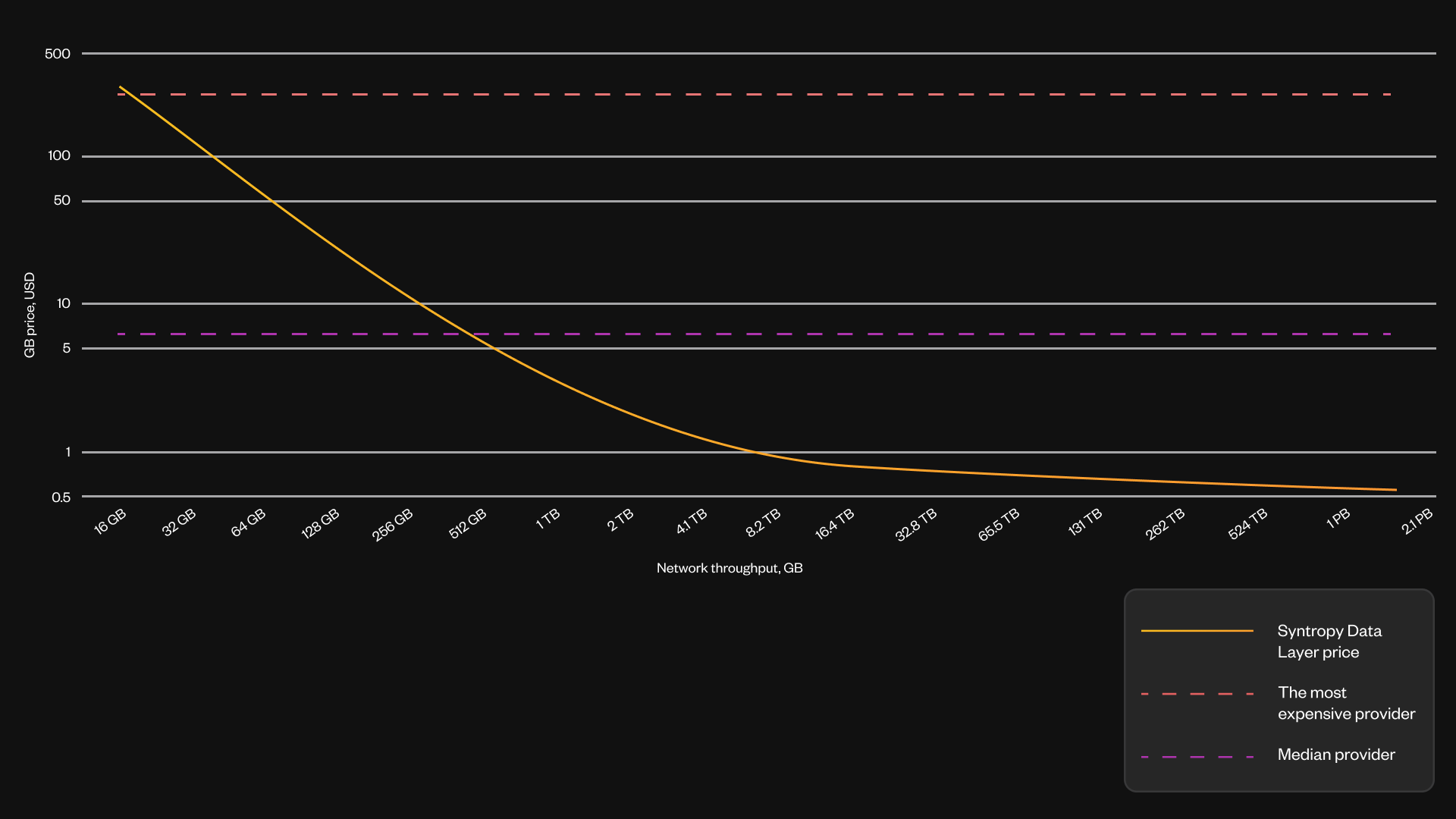The motivation for Data Layer protocol
The purpose
Synternet Data Layer protocol is created for providing and gaining access to blockchain data. While all types of data can be published by anyone on the Data Layer, the protocol is purpose built for Web3 data. For the primary blockchain data use case, full nodes connected to their respective blockchain networks can sell the data produced by these networks via Synternet. Users interested in building decentralized applications can purchase said data using cryptographic tokens. The protocol for sharing and using blockchain data in an incentive-driven way is called Synternet Data Layer.
The problem
The main problem with current on-chain data access is that the vast majority of dApps in existence today are centralized at their core. The data they use originates in a decentralized world but travels through centralized databases into these applications that only claim to be decentralized. However, at the end of the day, these apps are dependent on a plain and simple Web2 solution: an application programming interface (API) created and controlled by a single data provider entity.
The solution
The Synternet Data Layer protocol defines the authentication of entities engaging in the protocol, authorizing access for economic actors to perform their roles, and accounting for the data and is enforced through on-chain consensus. The protocol has many desirable properties making it a key building block of truly decentralized applications:
- Decentralization. It was created with a single goal to make access to blockchain data distributed and democratized so that anyone could become a data provider and also consume data via decentralized protocol.
- Usability. The economy, making on-chain data cheaper, and the quality of service of the solution is ensured via staking and incentivization, powered by the utility token.
- Scalability. By employing PubSub messaging instead of a centralized API model, we eliminate the burden of computation from the data source as well as introduce and incentivize the messaging broker network.
Decentralization
With Synternet Data Layer protocol, anyone can become a provider in the open market of Web3 data. Token holders decide which providers are reliable and, therefore, worth rewarding based on the quality of data they provide as well as their general performance. Tokenization of relationships between data providers and consumers is thus the most unique feature of Synternet Data Layer protocol, while Synternet token is synonymous with the gas for Web3 data.
Usability
A decentralized system is also able to offer prices below the current RPC node industry standard. The increasing demand within the Synternet Data Layer will push the price per GB of data down. On the high-data-price end, the vast majority of the total cost is fixed hardware server cost, at the low-data-price end, the cost-to-serve is expected to be 30-40% of the total cost. Here, cost-to-serve is the cost to pipe the data to the users through the network.
 Figure: Price per gigabyte of Ethereum data expected in the Synternet Data Layer vs RPC node providers and centralized APIs. Calculations assume that the profit margin for the Publisher and Broker nodes is 80% at the start and decreasing towards 60% as the network matures.
Figure: Price per gigabyte of Ethereum data expected in the Synternet Data Layer vs RPC node providers and centralized APIs. Calculations assume that the profit margin for the Publisher and Broker nodes is 80% at the start and decreasing towards 60% as the network matures.
Scalability
Synternet is able to achieve economies of scale by eliminating the computational burden from the origin of the data. In the standard request-reply model, each request results in some computation performed at the data source. With the publisher-subscriber model, a computation is performed at the source only once, which makes such a solution a lot more scalable and able to compete in price with already existing solutions for providing blockchain data, such as RPC nodes and centralized APIs.